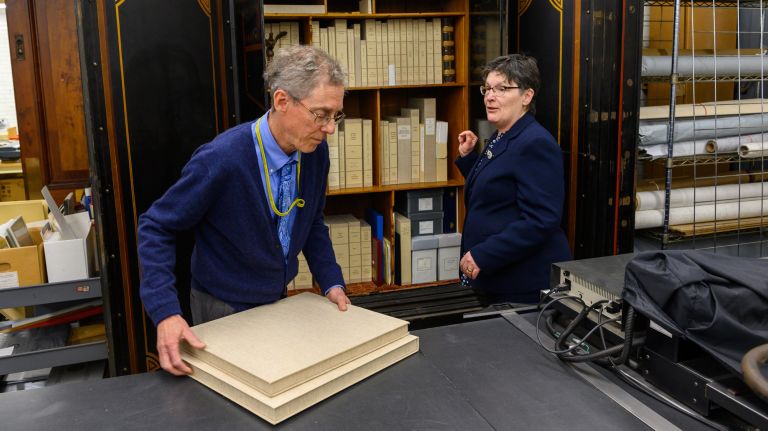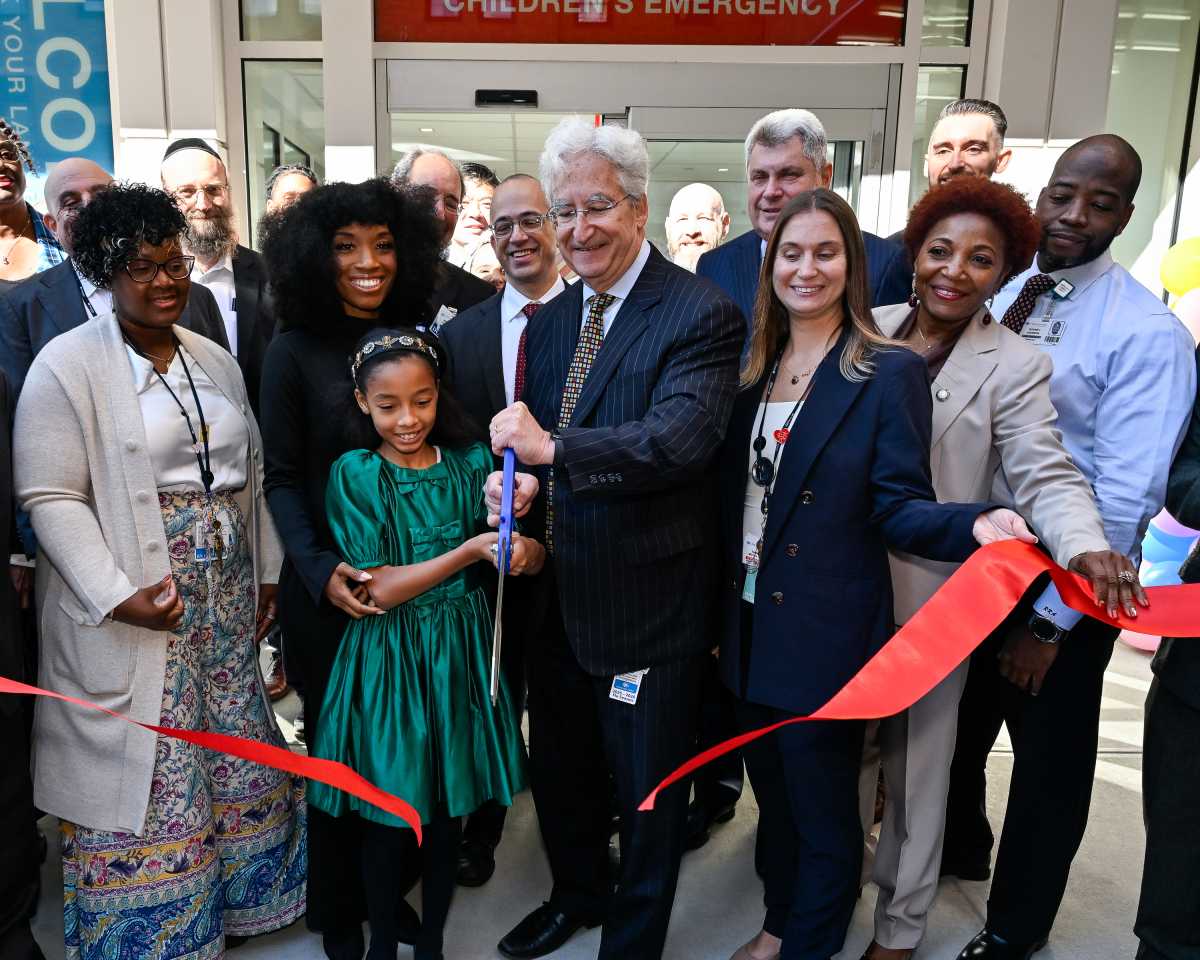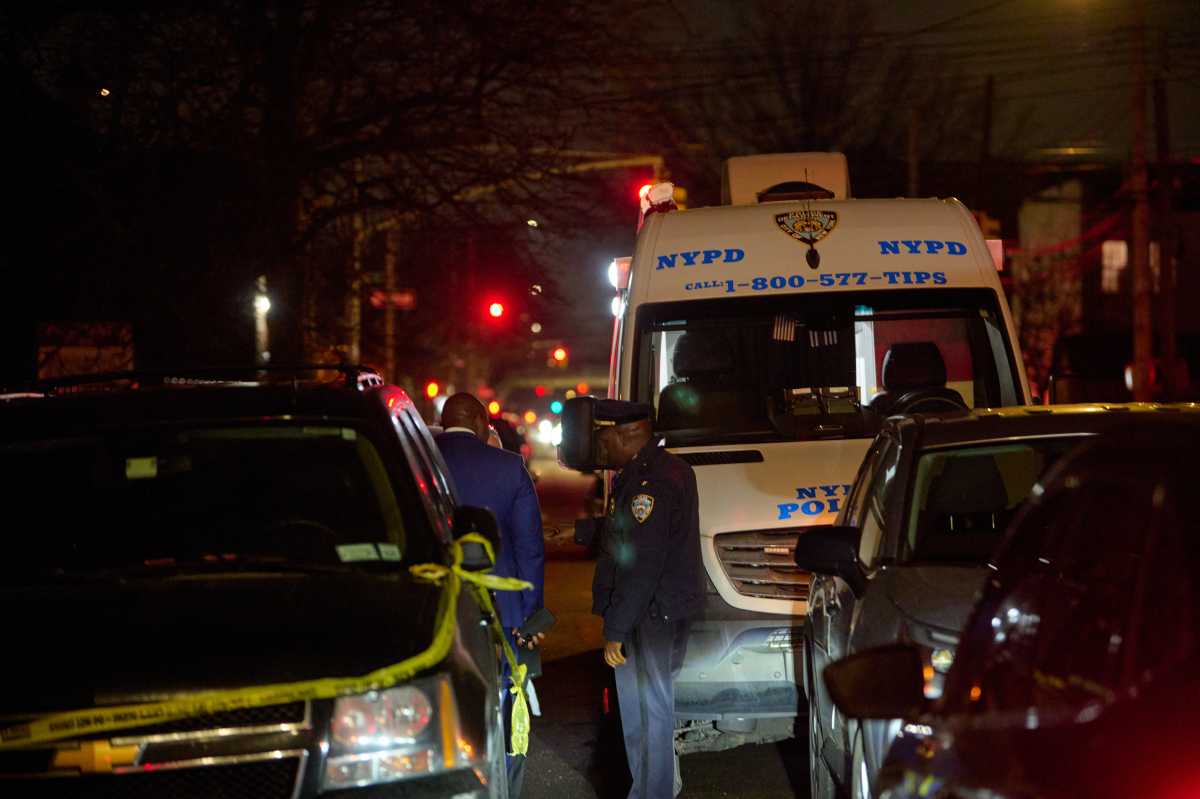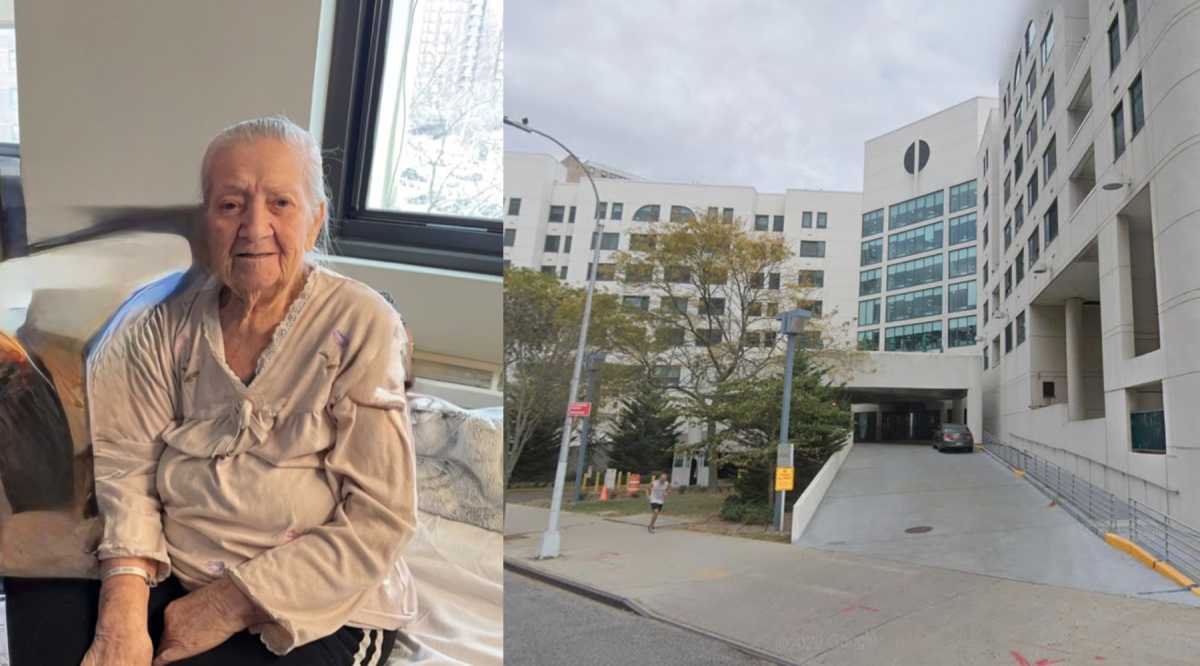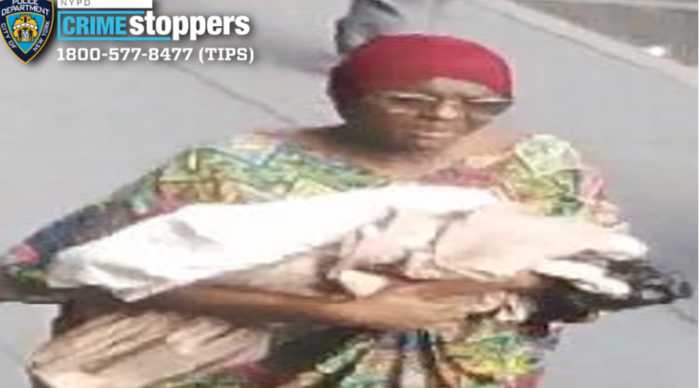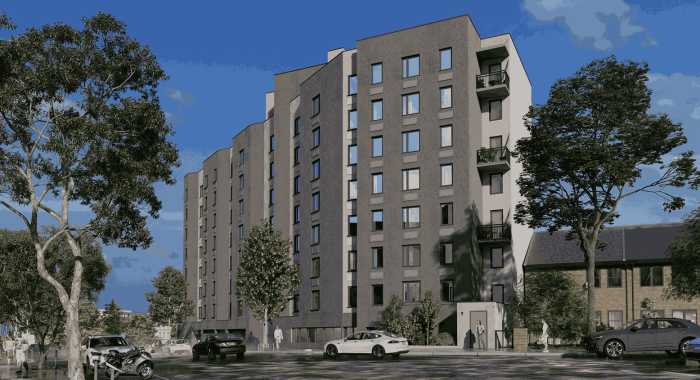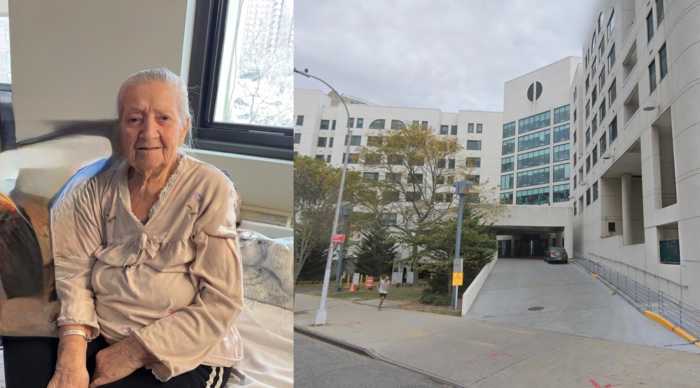
Everything you wanted to know about New York City history can be found in a majestic building on Chambers Street in lower Manhattan.
The Surrogate’s Courthouse is home to the Municipal Archives, the Municipal Library and the Records Center.
With a lobby modeled after Garnier’s Paris Opera House, the landmarked building is an appropriate site for this priceless treasure trove.
That’s where you can find 17th century maps and documents that provide a unique look into life in the city. It also houses the home plate from Ebbets Field, architectural drawings of the Brooklyn Bridge, birth and marriage records, as well as papers from every mayor dating to 1826.

“If you are any bit of a history buff or a city nerd, it’s just heaven because so much is here,” said Pauline Toole, commissioner for the city Department of Records and Information Services, which maintains the enormous collection of documents, maps, architectural renders, films, photos and other ephemera.
Many people who use these resources are conducting genealogical research. But birth, death and marriage records are just one part of what can be uncovered here.
“What is the evolution of public housing in New York? It didn’t just happen, it was a series of governmental decisions,” said Toole. “The documents showing that are in the archives and the library. Do you want to know why we have clean water in New York? We can show you the land acquisition for all that space upstate where we get our water from.”
Toole and Assistant Commissioner Kenneth Cobb are passionate about sharing these riches with the public.
There are currently 1.6 million digital images online, including a 720,000-photo collection of every building in New York City from the 1940s that went online just late last year.
As impressive as that seems, it’s not close to the archives’ entire photo collection, which tops 4 million images.
The agency describes its’ holdings as over 200,000 cubic feet of material.
“We have records of your city,” Cobb said. “You might want to know what the houses looked like in your neighborhood. Why is this here? Why is that there? This is the place to come for that information.”
The library and reading room are open every other Saturday to accommodate people who cannot visit during the work week.
And work is being done to better coordinate descriptions of collections so that specific material is easier to track down.
A recent visit to the archives found conservators working with fragile maps and books. Blueprints from the Flatiron Building, printed on cloth, were being carefully handled in preparation to be preserved digitally.
One hallway boasts an original architectural sketch of the Brooklyn Bridge, notable for its detail and the whimsical touch of a woman carrying a parasol.
With these sketches housed just one block from the foot of the Brooklyn Bridge, Toole said it’s the perfect place for school classes to visit as young students learn about the bridge while incorporating math and science skills.
Some of the oldest holdings in the archive include maps and documents from Gravesend, when it was a city all its own. There are the meticulously hand-written “secret sessions” of the Board of Aldermen in Brooklyn and chilling slave records from Gravesend that list the births of children while documenting their status as property in 1799.
The archives also have the original designs for Central Park, showing the attention spent on engineering, planning and aesthetics. That collection will be featured in a new book by Cynthia Brenwall, a conservator at the archives, on sale in April.
Maintaining the archives while keeping them accessible to the public is costly. The agency has been looking at creative ways to use its holdings — such as selling copies of blueprints and photos — to raise funds so it can digitize additional material to be shared online.
One new effort is the sale of vintage bonds and stock certificates from the 1920s to the 1980s, issued to pay for improvements to rapid transit, docks and other city projects. Each one is a work of art, elaborately illustrated and signed by mayors including Jimmy Walker, Fiorello LaGuardia, Robert Wagner, John Lindsay and Abe Beame. Prices range from $120 to $250.
Toole said they were retrieved from a warehouse in Brooklyn, where many were in surprisingly good shape.
“They are beautiful,” she said.
Toole said she would love to have enough funding to digitize the records of Mayor LaGuardia.
“So much of what the city is today is reflected in the decisions he made then,” she said. “I’d put those up in a heartbeat.”



